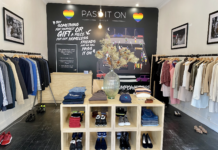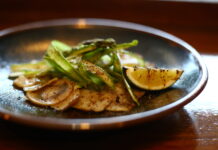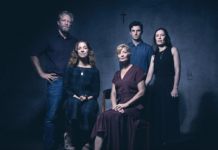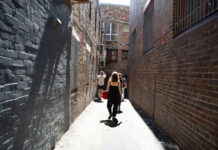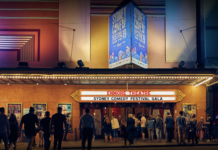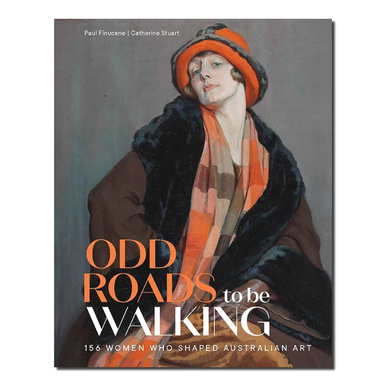Angela Stretch delves into a major new book which tells the story of 156 women artists spanning the last 150 years who have made significant contributions to our culture
Summer emerges from art history in Gwendolyn Grant’s Winter Sunshine, 1939 (fig. 1). A young female is poised on an outdoor porch between a red brick beam, plant barrel and magazine, in a moment hovering somewhere between early morning and eternity. Frontal, but barely swiveling to catch the light that streams along skin, she is the focal point of a composition remarkable for its balance and harmony. Positioned in a domestic exterior, her body itself with limbs bent is the link between the interior worlds of reading and the external objects of her environment.
The personification of an artist’s story during a summer holiday in the early 20th century is the inspiration for the title of a book that celebrates the pivotal role Australian women artists have had in shaping our modern culture. Odd Roads to be Walking: 156 Women who shaped Australian art spans 150 years of influential female artists who have made revolutionary changes in Australian society.
‘It was an odd road to be walking, this of painting. Out and out one went, farther and farther, until at last one seemed to be on a narrow plank, perfectly along, over the sea.’ This is a passage from the classic novel To the Lighthouse, (1927) by Virginia Woolf. It is an expression of the distance that exists between people as they are left to wonder what may have been, to examine the pieces and to find meaning in the light as an enigmatic metaphor for the preservation of life.
For those of us living in holiday chaos, Grant’s young female is a representation of both personal and domestic peace. Serene and beautiful as she is, the painting offers a still point in a turning world, the centre of a vortex that expands outward to bathe in sunlight. Radiating between realities, she resolves within her body, within her self-possession and solitude.
Almost all artistic practices mobilise visualisation and memory. Often artists also evoke the structures of the dream and historical narrative. Produced in a present moment, the resulting works often give tangible form to aspects of the past in ways that inspire thought, reflection.
This harmonious balance between the public and the private, the internal and external was evident in Grant’s art criticism, which questioned conventions of art practices, encouraging feminist principles and ambition. Twelve of her portraits were finalists in the Archibald prize and in 1939, when she produced Winter Sunshine, she had two works hung in the finalists exhibition including a landscape painting in the Wynne Prize.
The connection between meaning and power, and the attendant to sexual and cultural differences have corroborated the relations of how culture is organised. Contemporary women artists engage the world around them by developing ways of working that document and express aspects of loss, trauma, and reconciliation or renewal.
‘Neither bohemian nor bushman, this generation created a new creative subjectivity from scratch: the modern woman artist’. Dr Catriona Moore, University of Sydney, writes in the book’s Foreword.
The book functions as a meeting place for the many roads travelled by these notable women artists. Co-authored by two-regional medical professionals of Irish decent Paul Finucane and Catherine Stuart, the collection connects us with 156 meaningful intersections beyond the roles of daughter, wife and mother.
“As these richly talented women gathered around their easels and shared their dining tables, their courage, energy and generosity shone through,” said Finucane.
Emerging from an extraordinary history of community engaged contemporary art practice is a bold commitment to standing firm against the difficulties of not knowing the outcome. While our future is rooted in local aesthetics and traditions, it is sensitive to time. The level of innovation in the work produced by these women extends exponentially as a collection.
A founding member of the Sydney Contemporary Group of 1926, Thea Proctor was instrumental in compositional design in fashion and decorative arts. For many years she had a studio in George Street, Sydney where she would occupy her interests that also extended to interior design and flower arrangements. Her woodcuts and linocuts are widely collected, the AGNSW is in ownership of 58 works. 300 illustrations have been selected, one of which is Proctor’s iconic, The Rose, 1927.
The print is also featured in the Know My Name project, at the National Gallery of Australia. Lara Nicholls, is completing a PhD at the Australian National University on the professionalisation of British and Australian women artists (1885 – 1915), writes of the work, ‘The Rose beckons us to enjoy a fleeting moment of intimacy. Two women, their painted faces drawn together towards a plum-coloured rose, are surrounded by vivid garden flowers.’
Significant ideas of interest to artists in today’s changing environment is that of cultural distance and how the gaps in understanding between people, cultures and countries can be closer. The cacophony of ideas and information contribute to the ongoing reshaping of our perception of everyday life.
The authors have partnered with the Sheila Foundation, and all profits from book sales will go to Sheila.
Sheila was founded in 2019, following the release of the benchmark research on gender equality in the arts, Countess Report. Sheila has a mission to overturn decades of gender bias by writing Australian women artists back into our art history and ensuring equality for today’s women artists. Their philanthropic principle focus is to provide opportunities and support for contemporary women artists, one of their projects, Into the Light, is painting women back into our national archive.
Odd Roads is available in Sydney at the following locations:’
- AGNSW Shop
- S.H Ervin Gallery
- Woollahara Bookshop
- Gleebooks
- The Burns Bay Bookery
- Also, online bookstore www.oddroads.com.au .



